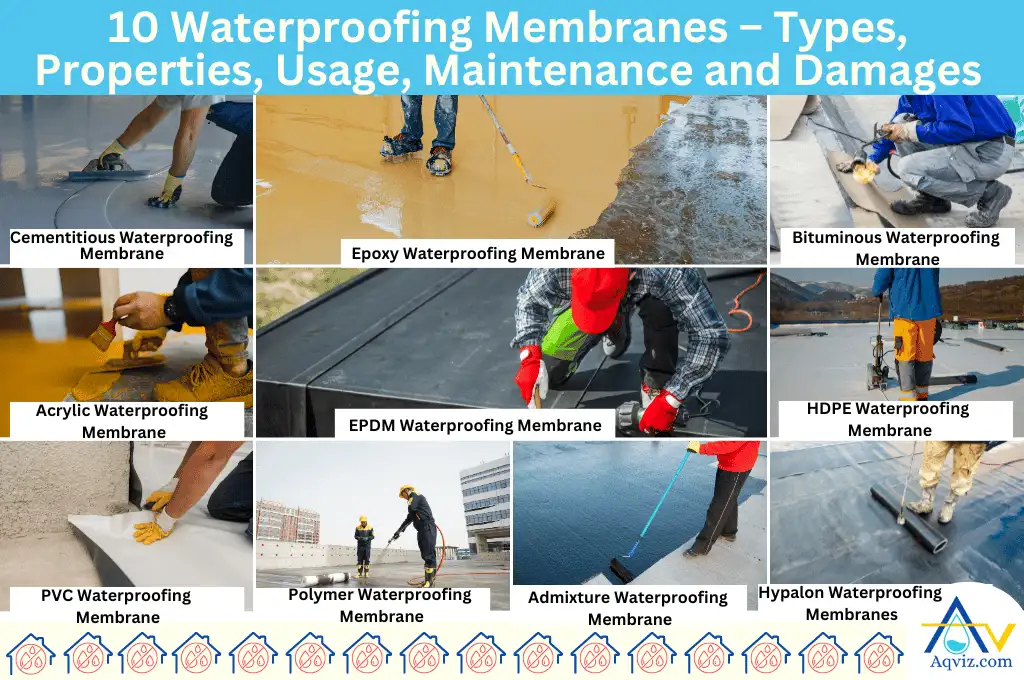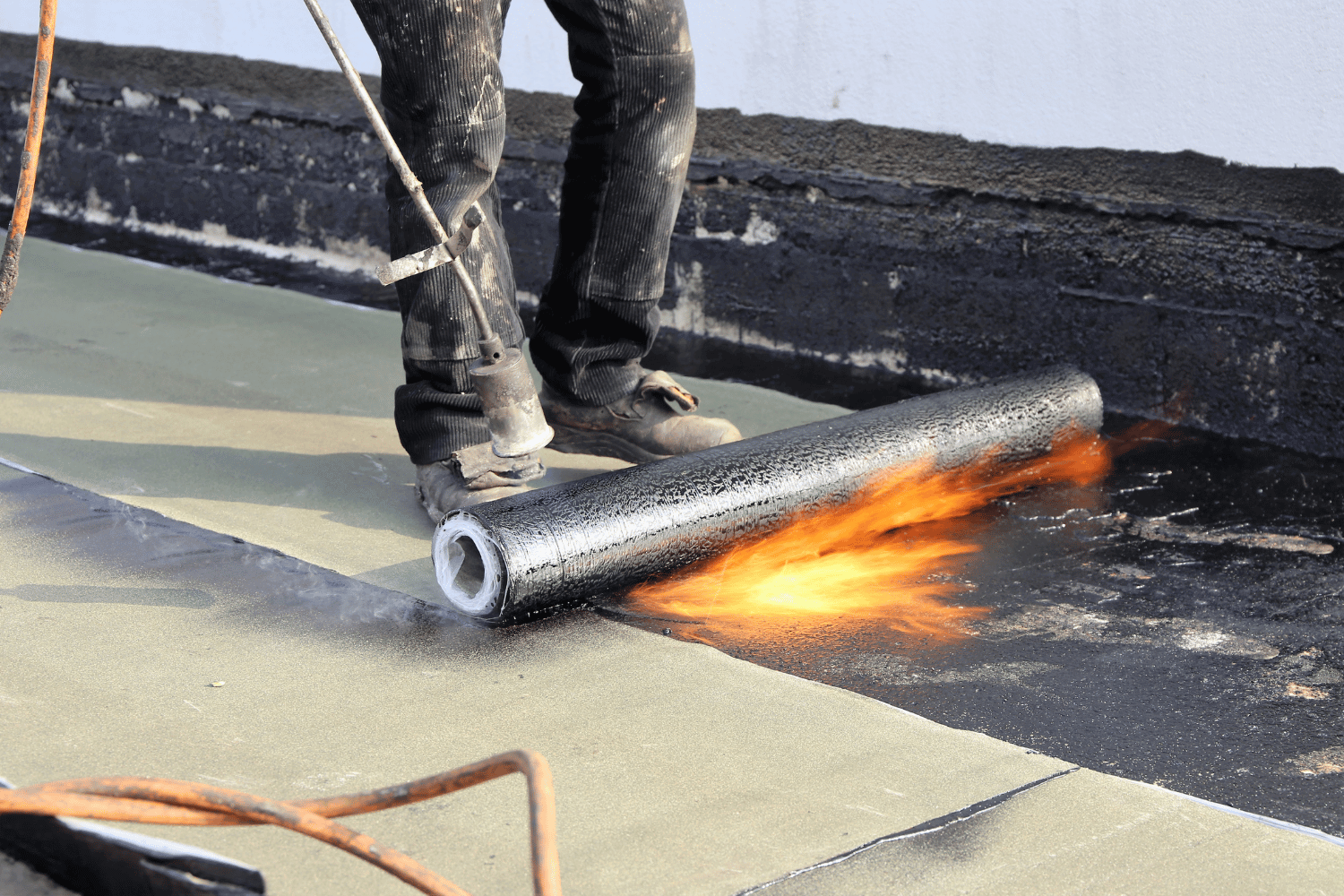Sorts of Waterproofing: Discovering the Various Approaches and Their Applications
Waterproofing is a crucial aspect of building and construction and maintenance. It shields frameworks from the detrimental impacts of water damages. There are a number of techniques offered, each with its one-of-a-kind applications and benefits. From membrane systems to cementitious remedies, recognizing these alternatives is important for efficient implementation. The option of waterproofing approach can considerably impact longevity and durability. Discovering these various methods reveals their unique benefits and prospective challenges, triggering more consideration of excellent services.
Membrane Layer Waterproofing Systems
Membrane waterproofing systems work as a critical barrier against water invasion in numerous structures. These systems commonly consist of thin sheets made from materials like rubber, polycarbonate, or asphalt, which are applied to surface areas to stop dampness infiltration. They can be set up over or below grade and are especially reliable in locations vulnerable to high water exposure, such as cellars, roofing systems, and foundations.The setup procedure entails cleaning the substrate, applying adhesives or guides, and exactly suitable the membrane layer to assure full coverage. Membrane systems can be either fully adhered, mechanically connected, or laid loose, depending upon the certain demands of the job. They supply durability and flexibility, accommodating structural activities without jeopardizing their waterproofing abilities. These systems can be reinforced with extra layers for enhanced protection. Inevitably, membrane waterproofing systems are crucial for protecting frameworks versus water damages and maintaining long-term stability.
Liquid-Applied Waterproofing Coatings
Liquid-applied waterproofing finishes give a flexible remedy for shielding surfaces from water infiltration - Water Solutions. These finishes include fluid materials that, when used, create a smooth, adaptable membrane. Their adaptability permits application on various substrates, consisting of concrete, steel, and wood. The finishes can be used in varied atmospheres, from residential to commercial settings, making them ideal for roofings, foundations, and below-grade structures.One substantial advantage of liquid-applied layers is their capability to adapt to irregular forms and penetrate fractures, creating a robust obstacle against dampness. They commonly show outstanding attachment buildings and resistance to UV radiation, guaranteeing long life and sturdiness. In addition, the application process is normally straightforward, enabling for fast installation and decreased labor prices. This method likewise lessens the threat of water pooling, as the continual layer effectively guides water far from at risk areas. Generally, liquid-applied waterproofing coatings are a reliable choice for comprehensive water security
Cementitious Waterproofing Solutions

Cementitious waterproofing remedies provide a durable choice for frameworks requiring reliable dampness security. These systems largely use a mix of concrete, sand, and chemical additives to create a water-proof barrier. They are commonly applied to surfaces such as concrete walls, foundations, and floorings, supplying a resilient, lasting protection against water intrusion.One of the crucial advantages of cementitious waterproofing is its ease of application; it can be used using a brush, roller, or spray, making it appropriate for numerous project dimensions. Additionally, this approach works with many surface areas and can frequently be utilized in combination with other waterproofing techniques.Cementitious options are particularly efficient in settings where water exposure is a worry, such as cellars or below-grade structures. Their exceptional attachment properties ensure that they bond well with substratums, giving a strong and impenetrable layer versus wetness infiltration.
Bentonite Waterproofing
Bentonite waterproofing is an extremely reliable method that utilizes sodium bentonite clay to produce an all-natural obstacle versus water. This strategy exploits the special homes of bentonite, which broadens upon call with water, securing any type of prospective leakages and preventing wetness infiltration. It is frequently utilized in different applications, including structure wall surfaces, passages, and preserving walls, where water resistance is essential.Bentonite can be applied in numerous forms, such as panels or blankets, supplying flexibility in setup. Its ability to self-seal makes it an attractive choice for locations subject to moving dirt or rising and falling water levels. Additionally, bentonite waterproofing is eco friendly, as it is an all-natural material that does not present dangerous chemicals into the surroundings.
Water Drainage and External Waterproofing Solutions
Efficient waterproofing frequently includes a mix of methods, including water drainage and external systems. Drain systems, such as French drains pipes and sump pumps, are created to redirect water away from structures, decreasing hydrostatic stress against structures. These systems are necessary in avoiding water buildup that can result in architectural damage and mold and mildew growth.External waterproofing, on the various other hand, includes applying safety barriers to the building's outside. Strategies such as the installation of water resistant membranes, coverings, or sealants can assist stop water infiltration. This technique not just shields the foundation however additionally boosts the overall sturdiness of the structure.Together, water drainage and external waterproofing systems form a detailed remedy to manage water Sump pump installation & replacement Omaha properly. By executing these methods, residential property owners can guard their investments versus the damaging impacts of wetness, making certain long-term security and safety for their structures.
Frequently Asked Concerns
Just how Do I Pick the Right Waterproofing Approach for My Task?
Picking the right waterproofing method depends upon aspects such as job kind, ecological conditions, budget plan, and preferred durability. Examining these facets permits for educated choices tailored to particular needs and requirements.

Can Waterproofing Be Applied in Winter Issues?
Waterproofing can be applied in winter problems, yet it needs particular products and techniques. Cold temperature levels may influence healing times and bond, requiring mindful selection of products created for low-temperature application.
What Are the Usual Indicators of Waterproofing Failing?
Typical indicators of waterproofing failure include visible water discolorations, peeling paint, damp odors, mold and mildew development, and splits in walls or foundations. Landscape drainage Omaha. These indications recommend that dampness is penetrating the barrier, compromising its effectiveness
The Length Of Time Does Waterproofing Last Prior To Requiring Upkeep?
The longevity of waterproofing differs, generally lasting between 5 to 10 years. Elements such as material high quality, environmental conditions, and maintenance practices influence its sturdiness, requiring routine inspections to guarantee effective protection against water intrusion.
Are There Eco-Friendly Waterproofing Options Available?
The question of green waterproofing alternatives discloses an expanding rate of interest in sustainable materials (Basement waterproofing Omaha). Various all-natural materials, such as plant-based sealers and recycled products, provide effective solutions while minimizing ecological effect, interesting eco mindful consumers